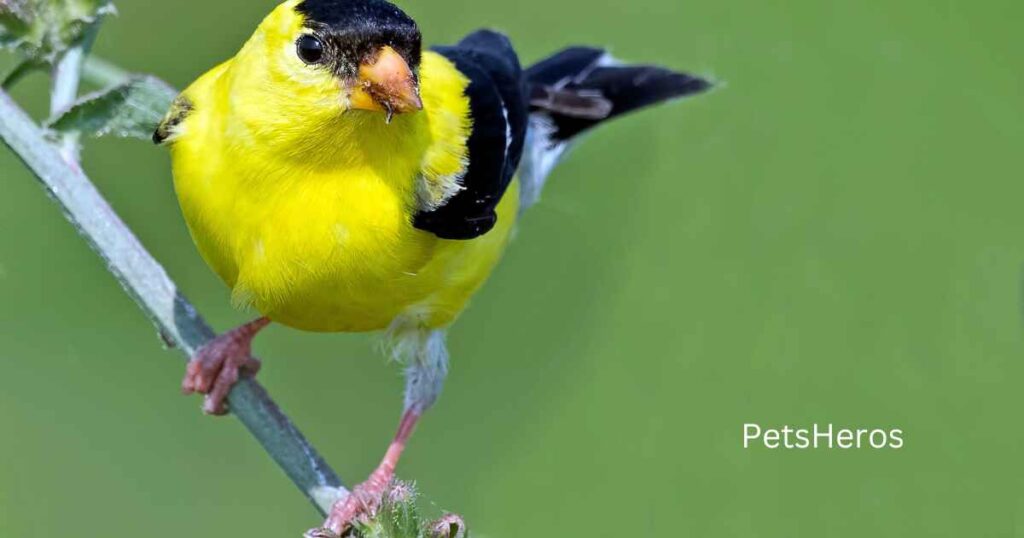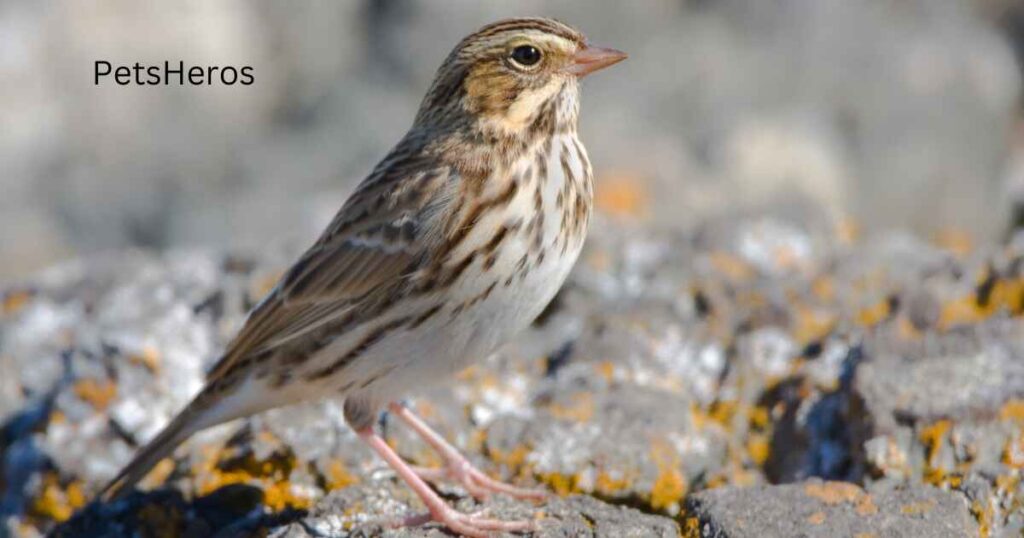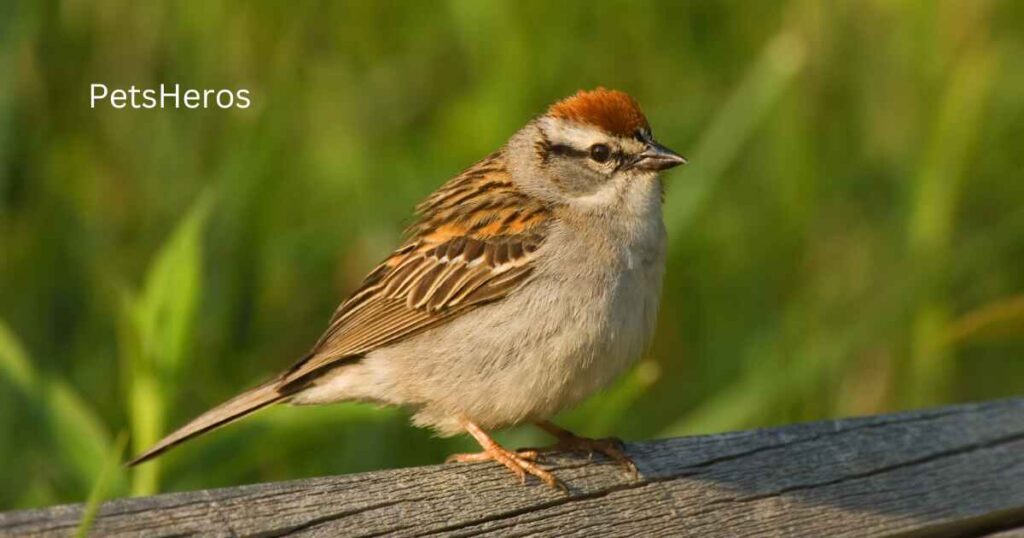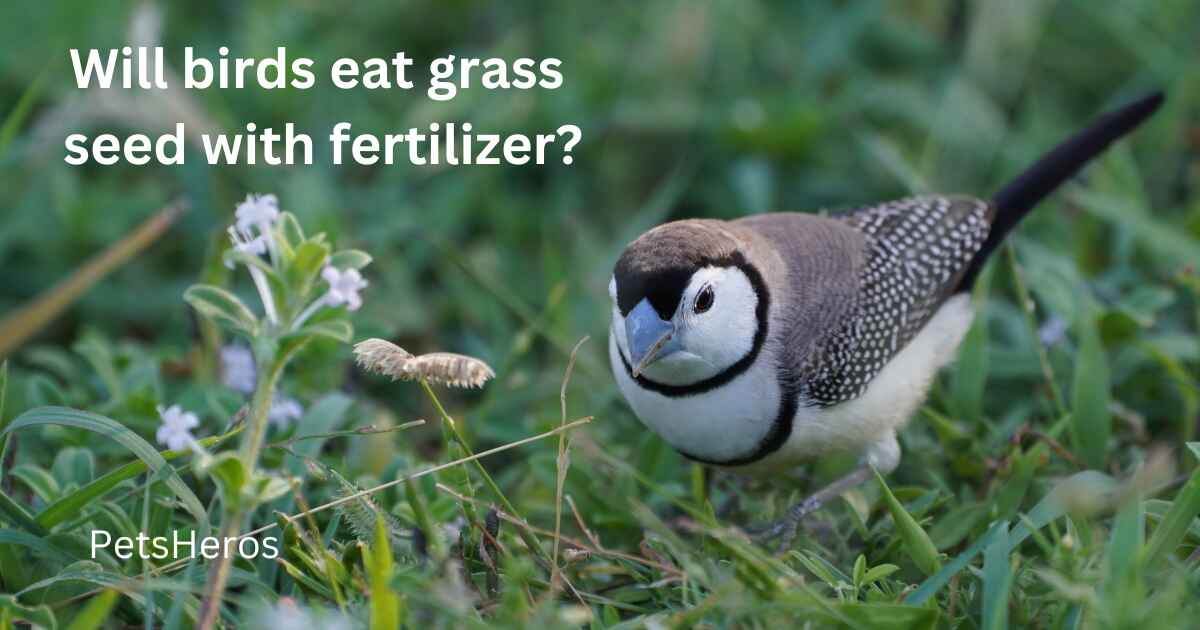Will birds eat grass seed with fertilizer?: Birds can be harmed by lawn fertilizer. Some fertilizers contain toxins that can harm birds or make them sick.
Some toxins can be deadly. Birds (and other animals) are particularly at risk from lawn fertilizers that contain weed and feed killers.
You can get a healthy lawn by applying fertilizer and weed killer. The fertilizer promotes lush grass, and the weedkiller ensures that there are no constricting weeds.
Unfortunately, the same toxins that are good for grass but bad for weeds may be harmful to wildlife and birds.
Birds unknowingly consume fertilizer and are unaware of the harmful chemicals they are consuming.
The problem isn’t as bad as it was in the past since more chemicals are being removed from commercial fertilizers because of their environmental impact. [Will birds eat grass seed with fertilizer?]
7 types of birds eat a grass seed with fertilizer
- American Goldfinch
- House Sparrow
- Savannah Sparrow
- Song Sparrow
- Chipping Sparrow
- Pine Siskin
- Lesser Goldfinch
1. American Goldfinch
The American goldfinch feeds during the day. The Cornell Lab of Ornithology states that the American goldfinch is one of the most strict vegetarians of all birds.
It eats the seeds of many plants, including weeds and grasses. It will feed at human-provided bird feeders, especially in winter, and prefer Niger Seed.
The American Goldfinch feeds primarily with its feet, unlike some finch species. The American goldfinch will often hang from seed heads to get at the seeds.
The American goldfinch will feed on catkins that are hanging from birches or alders in the spring by using its toes and beak to pull the catkin up and hold it against the branch. [Will birds eat grass seed with fertilizer?]

2. House Sparrow
The house sparrow is found throughout the world. It belongs to the Passeridae family of sparrows. The house sparrow is a small, slender bird with a length of 16 cm and a weight of.
The females and young birds have a pale brown-gray color, while the males are marked with brighter blacks, whites, and browns. The house sparrow, one of 25 species of the genus Passer, is native.
Europe, the Mediterranean Basin and large parts of Asia. The house sparrow is the most widely distributed wild bird.
Its introductions, whether intentional or accidental, have been made to many areas, including Australasia and Africa.
Although it can be found in a wide variety of habitats and climates, the house sparrow tends to avoid polar regions. [Will birds eat grass seed with fertilizer?]
Read Also: Is bread and milk good for dogs?
3. Savannah Sparrow
Savannah Sparrows have medium-sized tails that are notched. The crown feathers are often raised to give the bird a small peak. The sparrow’s thick-based bill, which eats seeds, is small.
Savannah Sparrows have brown upperparts and white underparts, with crisp stripes all over. The upper parts are brown and black with fine streaks.
Their underparts have white breasts and sides with brown or black streaks. A small yellow patch is visible on the face, just in front of the eyes.
Savannah Sparrows feed on seeds that are near or on the ground. They can be found in small groups or alone. [Will birds eat grass seed with fertilizer?]

4. Song Sparrow
The song sparrow was the subject of many studies that examined the physiological reactions of birds to different conditions, such as the length of daylight and climatic conditions.
As breeding season approaches, most birds increase the mass of their reproductive organs as a response to an internal or external signal.
This signal is different for each species. For some species, the source is internal and independent of environmental cues.
Other species need external cues such as changing temperatures and daylight hours to begin increasing their mass, Horned Lark. [Will birds eat grass seed with fertilizer?]
5. Chipping Sparrow
The Chipping Sparrow has a bill of medium size, which is small for a sparrow. The shape of the classic Spizella is important for sparrow identification.
The summer Chipping Sparrow is clean, crisp and pristine with its frosty underparts. It has a pale face with a black line running through the eye.
The cap is reddish-brown, with a subdued but warm brown. Chipping Sparrows are often seen feeding on the ground.
They also hide in shrubs and sing high up (often from evergreens). You can often see them in loose groups, flitting from the open ground. [Will birds eat grass seed with fertilizer?]

6. Pine Siskin
Pine Siskins have a very small size, a sharp bill, and a short tail with a notch. The bill of the Pine Siskin is longer and more slender compared to that of other finches.
Look for their pointed wingtips and forked tails when they are in flight. Yellow flashes can be seen as the birds take off, flap at the branch tips, or display when mating.
Pine siskins have brown feathers with a lot of streaking. They also have subtle yellow edges on their wings and tails.
Pine Siskins are often seen in winter visiting feeders (especially for thistle and nyjer seeds) or hanging upside-down from the branch tips of conifers.
The birds are social, often foraging together in large flocks, and they chatter constantly to one another, even when flying in undulating circles. [Will birds eat grass seed with fertilizer?]
Read Also: Can I use human shampoo on dogs?
7. Lesser Goldfinch
The Lesser Goldfinch is a tiny songbird with stubbill and long pointed wings. Its tails are short and notched. but they are also fairly common in suburbs.
The males have a bright yellow underside with a black cap, and white patches on their wings. Their backs can either be dull green or glossy black (especially along the West Coast).
The tail is black with large white corners. The females and immatures are olive-colored with dull yellow underparts. Their black wings have two white wingbears.
The Lesser Goldfinches can gather up to several hundreds at once. In weedy fields or at bird feeders, they feed on grains and seeds. They mix with other songbirds that feed on seeds, particularly at bird feeders. [Will birds eat grass seed with fertilizer?]

Conclusion:
In conclusion, birds can eat grass seed that has been treated with fertilizer, provided the fertilizer is safe and non-toxic.
While many seed-eating birds will forage in areas with fertilized grass, it’s crucial to use organic or bird-friendly products to ensure their health and well-being.
By taking care to choose the right fertilizers and creating a welcoming habitat, you can enjoy a thriving garden that attracts a variety of birds. [Will birds eat grass seed with fertilizer?]
1. Can birds consume grass seed treated with fertilizer?
Ans: In general, yes. Birds can eat treated grass seeds. It’s vital to make sure that the fertilizer is non-toxic and safe for wildlife.
2. Can some fertilizers be harmful to birds if they are ingested?
Ans: Yes. Some chemical fertilizers may cause harm to birds when ingested. Avoid using high levels of toxic chemicals and opt for organic alternatives.
3. Can I attract birds with grass seed?
Ans: You can scatter grass seeds untreated in your garden to attract birds. You may find that birds are attracted to areas with food and shelter.
